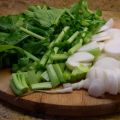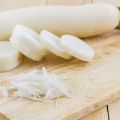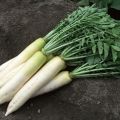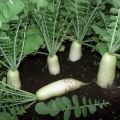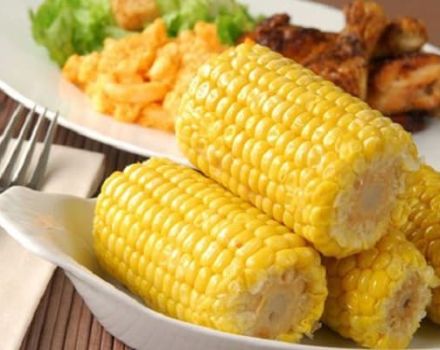Description of the daikon variety Raspberry nectar, recommendations for cultivation and care
Daikon Raspberry Nectar f1 is a deliciously sweet Japanese radish. Every year, this root crop is becoming more and more popular with Russian gardeners. This fame is justified by the fact that the variety combines an unusual appearance and taste of the fruit. But unlike its bitter counterparts, daikon raspberry nectar is endowed with useful and dangerous properties. Therefore, before purchasing the seeds of this plant, you should carefully read its characteristics.
Description of the variety
Daikon variety Raspberry nectar is considered the sweetest and earliest root crop. The growing season from seed placement to harvest is 50-60 days.
According to the results of field trials in 2014, the plant took a leading position in the quality and appearance of its fruits.
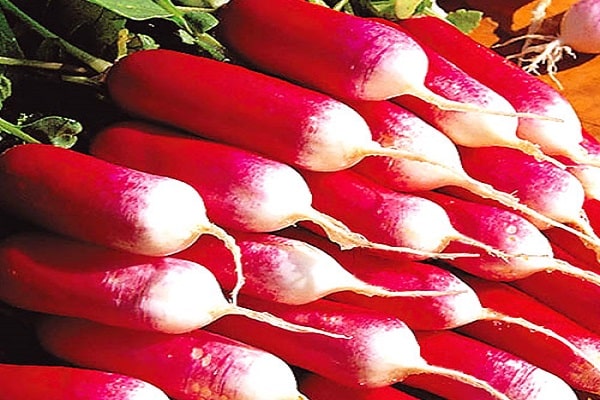
Description of root vegetables:
- shape - barrel-shaped;
- weight - 600-900 g;
- color - deep crimson;
- the skin is smooth, leveled;
- the pulp is juicy,
- the taste is mild, very sweet.
For their intended purpose, the fruits are used in the preparation of salads, cold snacks, and pickles. A distinctive feature of the variety is that it is ideal for dietary nutrition.

Growing
The variety Raspberry nectar is a whimsical culture. Without proper care and planting rules, the plant's taste decreases. In addition, with the wrong approach, the risk of cracking of root crops increases, which negatively affects their shelf life.
To get a good harvest, you first need to find a place for planting. A rational solution would be to choose a darkened area, without stagnant water.
Favorable predecessors for radish would be:

- cereals;
- potatoes;
- garlic;
- cucumbers;
- onion;
- legumes.
At the same time, the daikon variety Raspberry nectar cannot be planted in the place where cabbage crops grew before.
The plant grows well on light, fertile soils. Therefore, it is recommended to add ash and compost 30 days before sowing seeds. In addition, it is desirable to enrich the soil with nitrogen and mineral fertilizers.

Planting seeds from types of radish destination is carried out in several stages:
- In early April, the root crop is sown to obtain seed.
- From mid-June to early July, the radish is planted for fruit consumption in the summer.
- From mid-July to August, sowing of the plant is carried out for storing root crops.
Scheme planting daikon is 10 cm in a row and 45 cm in a row. Seeds are laid to a depth of 5 cm. In this case, 3-4 seeds are placed in one hole.
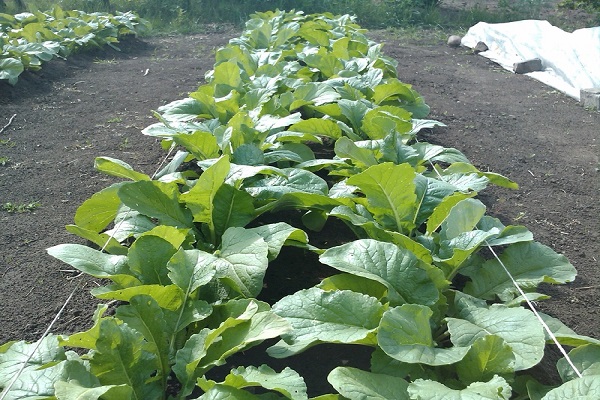
Care features
The first shoots of a radish usually appear 5-7 days after planting. For their full growth and development, you will need to follow a number of agricultural rules.
Care of the daikon raspberry nectar variety:
- When the seedlings grow up, one strong plant is left in each hole, all the rest are removed or transplanted with a ball of earth to a new place.
- To increase the mass of root crops, the radish must be fertilized double superphosphate... Top dressing is introduced in liquid form 1 time in 20 days.
- Irrigation of the soil is carried out as needed. If there is a drought, the plant should be watered at least 3 times a week. In cloudy weather, irrigation can be reduced by up to 1 time.
- In order for the root system to be saturated with oxygen, it is recommended to loosen the soil after each watering.
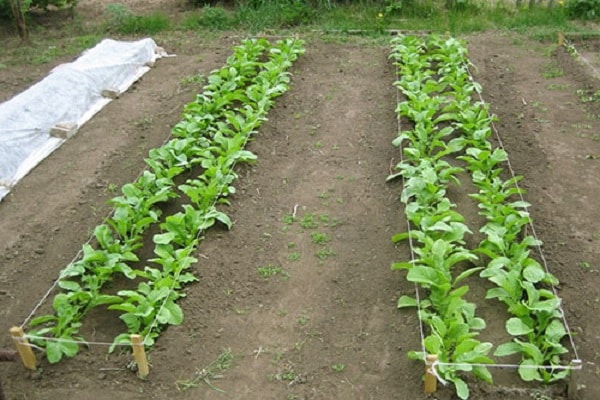
Do not forget about weeding. Without removing the weeds, the plant will not receive the required amount of nutrients.
Useful and harmful qualities of fruits
Everyone knows that the Japanese pay great attention to their health. Therefore, their breeders have made every effort to make the raspberry nectar daikon radish not only tasty, but also as useful as possible.
Studies have shown that specialists have successfully coped with the task. Daikon root vegetables contain pectin, vitamins B and C, myrosinase enzyme, and fiber. All of these trace elements have a beneficial effect on human health.
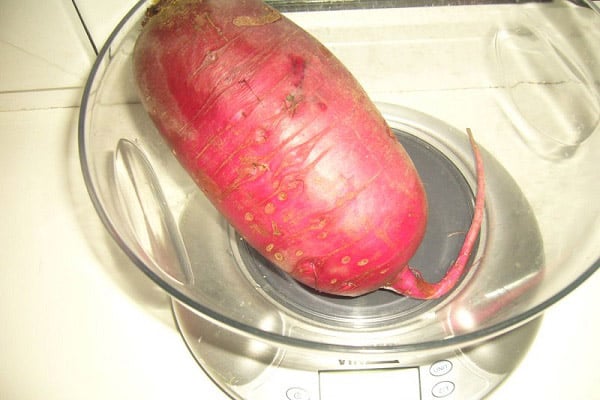
Consider the main benefits of daikon:
- Due to its low calorie content, the root vegetable is often involved in dietary nutrition.
- Daikon prevents the development of acute respiratory infections and other infectious diseases.
- Radish is used for aesthetic problems. In cosmetology, it has a positive effect in eliminating defects in the skin, hair and nails.
- The plant breaks down stones in the human body and removes toxins.
- Radish boosts the immune system.
- The root crop has a positive effect in the presence of malignant and benign neoplasms in the human body.
In addition, the radish prevents the penetration of toxins into itself. Therefore, even small children can eat it.
But as practice has shown, the raspberry nectar radish not only benefits the human body, but also harms.

The root crop received negative qualities due to fiber, which in large quantities negatively affects the digestive tract, kidneys and metabolism. Therefore, it should only be eaten in small portions.
Advantages and disadvantages
According to gardeners, the Daikon Raspberry variety is endowed with certain advantages and disadvantages.
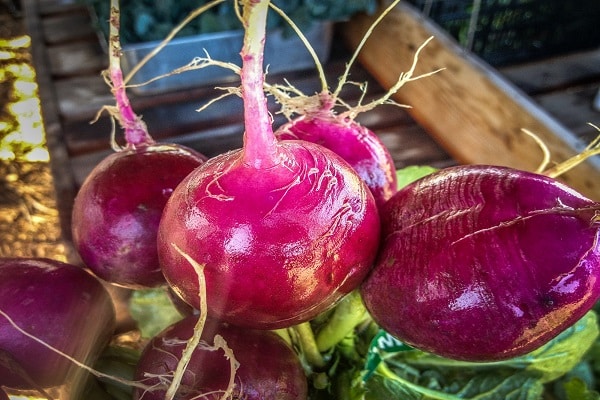
The pluses of the plant include:
- early maturity;
- taste and useful properties of root crops.
Among the disadvantages, gardeners note:
- whimsical care;
- weak immunity to diseases and pests;
- short shelf life.
As you can see, daikon radish has more negative qualities than advantages. However, according to summer residents, the taste and useful properties of root crops have a large advantage over the other disadvantages of the plant.
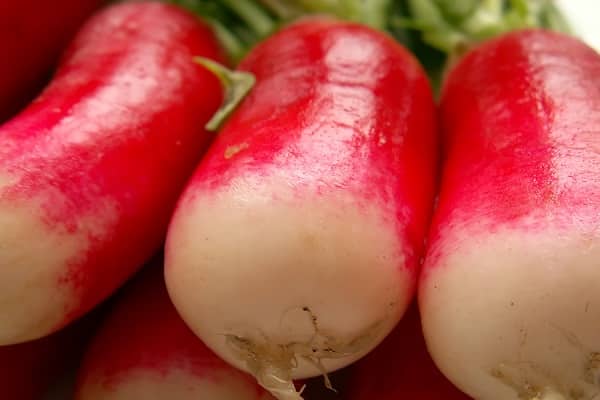
Pests and diseases
During the growth of daikon, Raspberry nectar needs protection from diseases and insect infestations.
The plant has three main pests, these are:
- cruciferous flea;
- autumn cabbage fly;
- scoop.
If you do not pay attention to the plant in a timely manner, these insects can completely ruin the crop. Therefore, in preventive measures, it is worth protecting the seedlings in advance by sprinkling them with tobacco dust or dusting them with wood ash.
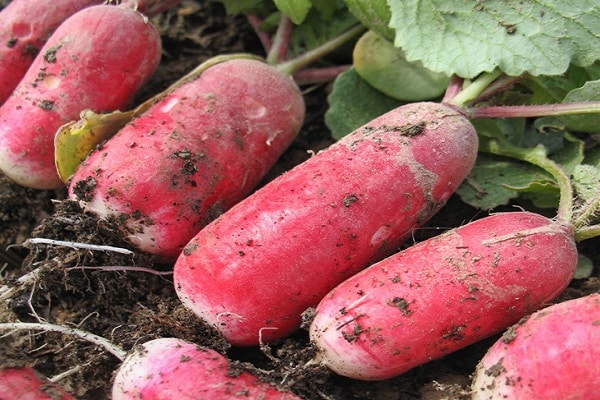
Among the diseases that most often damage daikon are:
- keel;
- blackleg.
Typically, these diseases develop due to plant damage and soil contamination. If the defects of the root crop can be prevented by timely processing them from insects, then disinfection of the soil should be done in the fall.To do this, it is recommended to dig up the soil well, remove weeds and spill it well with a weak manganese solution. In the spring, this manipulation must be repeated.
In case of severe damage to the plant, it is recommended to use special chemicals.

Harvesting and storage
Harvesting a daikon harvest, as well as leaving, requires compliance with several rules. The fact is that the roots of this variety are very juicy and, as a rule, break when removed from the ground. In addition, improperly prepared fruits have a short shelf life.
So, let's consider the main conditions for collecting radish:
- Harvesting for storage of root crops should be carried out before the first frost, in the morning or in the afternoon.
- It is necessary to extract root crops only by digging with a pitchfork or a shovel.
- It is recommended to cut the tops off immediately, leaving a root 1–2 cm long.
- The damaged roots must be sorted from the whole.

When the radish is dry, it is transported to the cellar for storage. In this case, the basement must be prepared in advance. It does not allow the presence of dampness and mold. The optimum temperature for storing root crops is considered to be + 1–2 degrees, air humidity 80–85%. As a rule, daikon radish does not lose the value of its fruit within 2-3 months. Then they begin to fade gradually.
Having familiarized yourself with all the characteristics of the Japanese raspberry nectar radish, one can come to the conclusion that this is a rather whimsical culture. Therefore, when choosing it, you will need to make a lot of effort and free time. However, subject to all the rules of agricultural technology, the radish will thank you with useful fruits that will appeal to all households.




